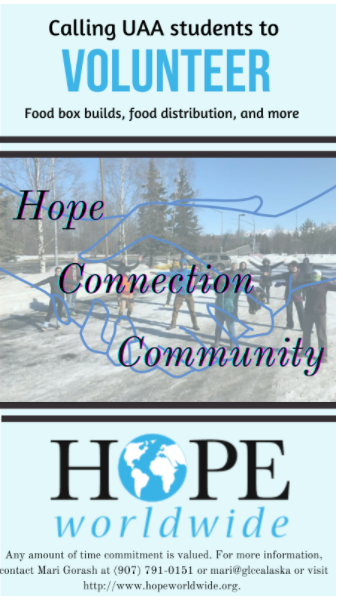4 Application of the Theory of Planned Behavior
Mary J. Ryan & Amber K. Worthington
Loneliness is a widespread and significant problem in the United States (Halpert, 2020), particularly for university students (American College Health Association, 2019). Loneliness in university students is associated with lower social adjustment to university life, lower perceptions of social support, and lower feelings of belonging on campus (Hopmeyer, Troop-Gordon, Medovoy, & Fischer, 2017; Sadoughi & Hesampour, 2016). One way to solve this problem is through volunteering, as volunteering increases community connectedness and belonging and decreases loneliness (Bowe et al., 2020).
Hyde and Knowles (2013) used the Theory of Planned Behavior to examine university students’ intentions to volunteer. The study included a convenience sample of 235 university students in Australia. The study used an observational design and asked the participants to self-report on the main predictors in the Theory of Planned Behavior (attitudes, subjective norms, and perceived behavioral control), additional predictors (past behavior and moral obligations), and intentions to volunteer. The findings indicated that 67% of the variance in intentions to volunteer were explained by the predictor variables. Attitudes and perceived behavioral control had the strongest influence on intentions. These results are correlational, not causational, due to the observational nature of the study design. The results cannot be generalized due to the convenience sample. The authors did find theoretical support for the Theory of Planned Behavior.
The Theory of Planned Behavior can be applied to design messages to persuade university students to volunteer, specifically at the University of Alaska Anchorage (UAA) chapter of Hope Worldwide. Hope Worldwide is an international, faith-based organization established in 1991. Its mission statement is to “change lives through the compassion and commitment of dedicated staff and volunteers to deliver sustainable, high-impact, community-based services to the poor and needy” (Hope Worldwide, 2020). Hope Worldwide connects university students to volunteering opportunities in Alaska.
A persuasive message to increase UAA students’ intentions to volunteer with Hope Worldwide would require designing a message that influences their attitudes, subjective norms, and/or perceived behavioral control. One way to change a university student’s attitudes towards volunteering might be to add a new salient belief by providing the individual with additional information about the behavior and outcome of interest (e.g., “You might not realize that volunteering can reduce your feelings of loneliness”). One way to change a university student’s subjective norms about volunteering might be to increase the salience of a particular reference, specifically their friends and peers (see Park & Shin, 2017; e.g., “Have you considered whether other students at UAA think it is important for university students to volunteer to better our community?”). One way to change a university student’s perceived behavioral control might be to provide verbal encouragement (e.g., “You can do it!”) or remove a perceived barrier (e.g., “Even if you don’t have much time to volunteer, any time you can spare is worth it).
Example by Mary J. Ryan
The poster I created with Canva is designed to address the components of the Theory of Planned Behavior. It would be shared via social media to reach the target audience, UAA students. It could also be printed and distributed on campus.
It affects attitudes with the words “hope,” “connection,” and “community.” These are the benefits of volunteering and add a new salient belief. The hands graphic gives a visual representation of connection and friendship. I also hope that it gives a sense of equality. The helping hand is not reaching down to another, but across. The image beneath shows the group of volunteers that a student would be joining.
Subjective norms are addressed with the invitation “calling UAA students to volunteer.” In other words, Hope Worldwide at UAA, a group of students, wants other UAA students to volunteer. This increases the salience of a particular referent (i.e., other students).
Perceived behavioral control is influenced by giving the viewer an action. They can gain hope, connection, and community by volunteering. They can help people by participating in the food box builds and distribution. The contact information is given as a first step. Mari can then help whoever contacts her by sharing the latest opportunities and discussing how the students can and want to help. The main reservation for volunteering is a lack of time (Hyde & Knowles, 2013). By stating that any amount of time commitment is valued, I increased perceived behavioral control.

References
American College Health Association (2019). National college health assessment. Retrieved from https://www.acha.org/documents/ncha/NCHA-II_SPRING_2019_US_REFERENCE_GROUP_EXECUTIVE_SUMMARY.pdf
Bowe, M., Gray, D., Stevenson, C., McNamara, N., Wakefield, J. R. H., Kellezi, B…, & Costa, S. (2020). A social cure in the community: A mixed‐method exploration of the role of social identity in the experiences and well‐being of community volunteers. European Journal of Social Psychology, 50(7), 1523-1539.
Halpert, J. (2020) How to manage your loneliness. The New York Times. Retrieved from https://www.nytimes.com/2020/04/20/smarter-living/how-to-manage-your-loneliness.html
Hope Worldwide (2020). Hope Worldwide. Retrieved from https://www.hopeww.org
Hopmeyer, A., Troop-Gordon, W., Medovoy, T., & Fischer, J. (2017). Emerging adults’ self-identified peer crowd affiliations and college adjustment. Social Psychology of Education, 20(3), 643-667.
Hyde, M. & Knowles, S. (2013). What predicts Australian university students’ intentions to volunteer their time for communication service. Australian Journal of Psychology, 65(3), 135-145.
Park, S., & Shin, J. (2017). The influence of anonymous peers on prosocial behavior. PLoS One, 12(10) doi:http://dx.doi.org.proxy.consortiumlibrary.org/10.1371/journal.pone.0185521
Sadoughi, M., & Hesampour, F. (2016). Relationship between social support and loneliness and academic adjustment among university students. International Journal of Academic Research in Psychology, 3(2), 1-8.

